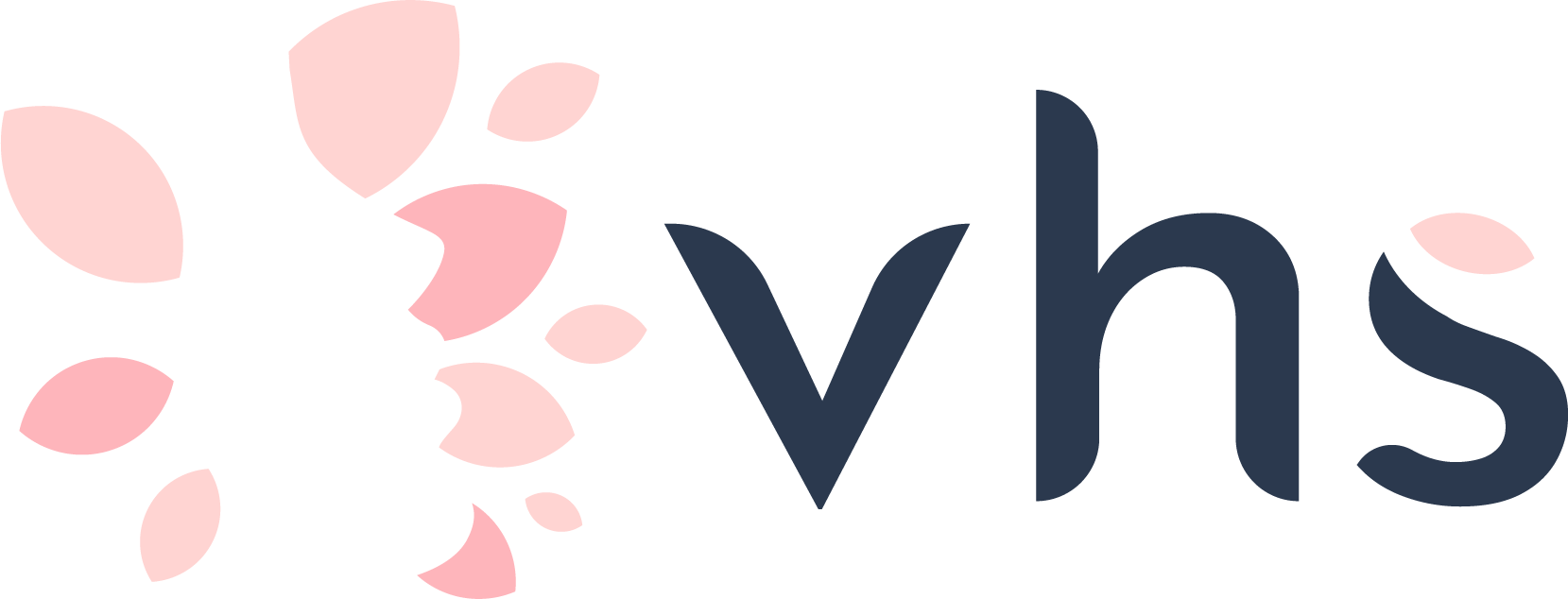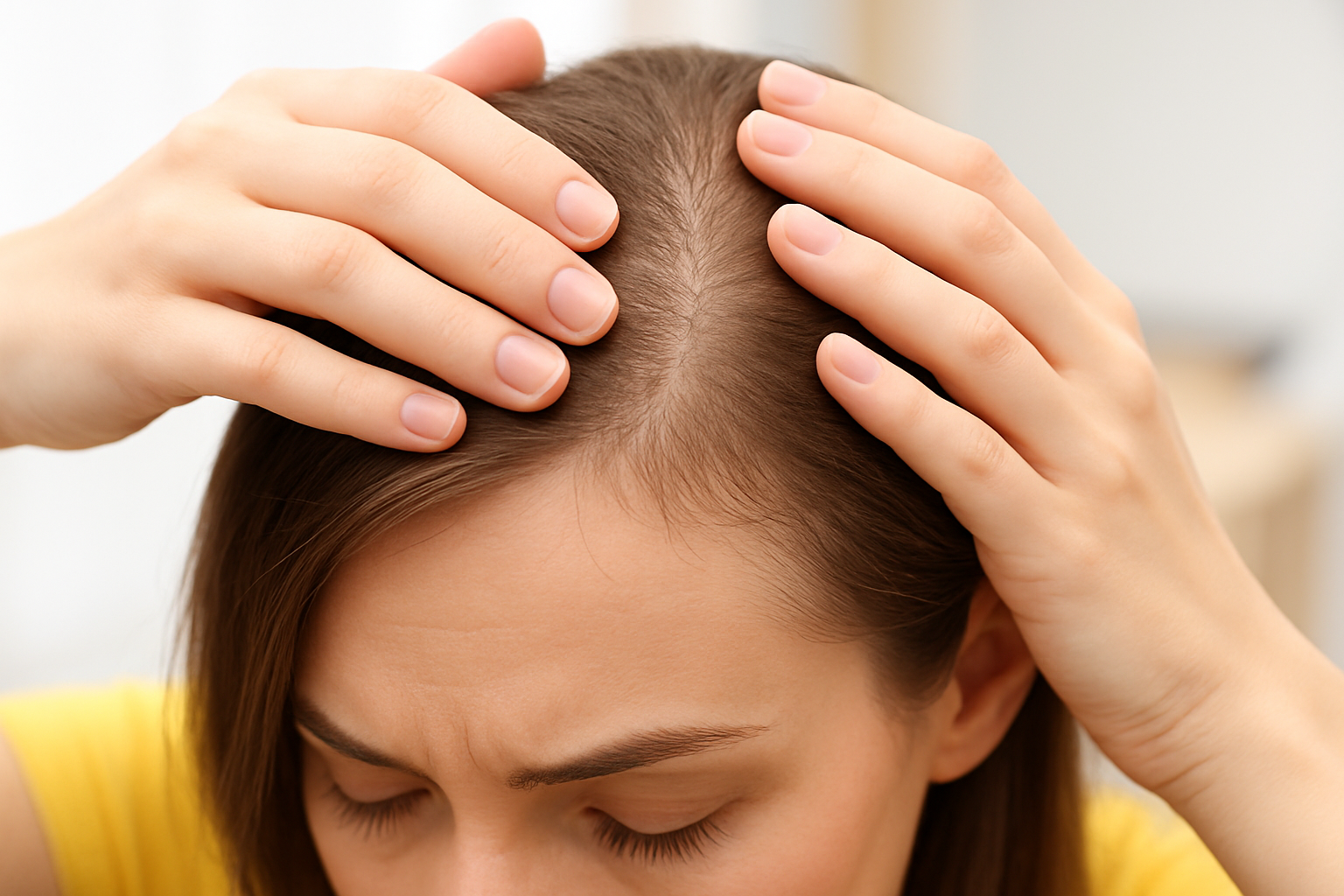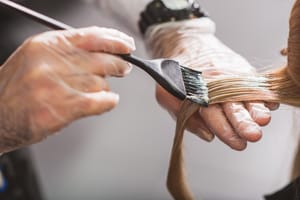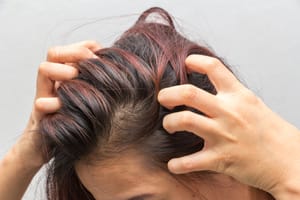Pregnancy can be a time of dramatic change for your body — including your hair. Some women notice an increase in fullness and shine during pregnancy, only to experience heavier hair shedding months after giving birth.
In this article, I explore postpartum hair loss: what causes it, how long it lasts, what makes it better or worse, and when to seek medical help.
Hormonal fluctuations after childbirth are the main cause of postpartum hair loss, as the drop in estrogen levels triggers more hairs to enter the shedding phase.
For context, the average person typically sheds 50 to 100 hairs per day, but postpartum hair loss can temporarily increase this amount. Experiencing postpartum hair loss is perfectly normal and is a common, expected part of recovery after giving birth.

What Is Postpartum Hair Loss?
First, a clarification: hair loss during pregnancy is relatively uncommon, while most of the shedding tends to happen after delivery.
During pregnancy, rising estrogen and other hormones push more hair follicles into the anagen (growth) phase and delay the telogen (resting/shedding) phase. The result is often fuller, thicker hair and less shedding.
After childbirth, when hormone levels (especially estrogen) drop, many hair follicles synchronously transition into the telogen phase, leading to a surge of shedding. This is known as postpartum telogen effluvium.
In rare cases, some women may notice mild shedding or thinning during pregnancy — often triggered by stress, illness, nutritional deficiencies, or thyroid changes — but the “classic” pattern is: you appear to have more hair during pregnancy, and then months later, much of that “extra” hair comes out.
Hormonal changes from fertility treatments can also contribute to hair changes during this time. Some women experience hair thinning due to various reproductive or hormonal factors, including pregnancy, breastfeeding, miscarriage, and fertility treatments.

Why Does Hair Loss Happen After Pregnancy?
The Hair Growth Cycle Simplified
Your hair follicles cycle through 3 phases:
Anagen (growth) —
hair actively grows; this is when hair growth begins as new strands originate from the hair follicles in the scalp.
Catagen (transition) —
hair stops growing.
Telogen (resting/shedding) —
hair eventually sheds and a new hair emerges.
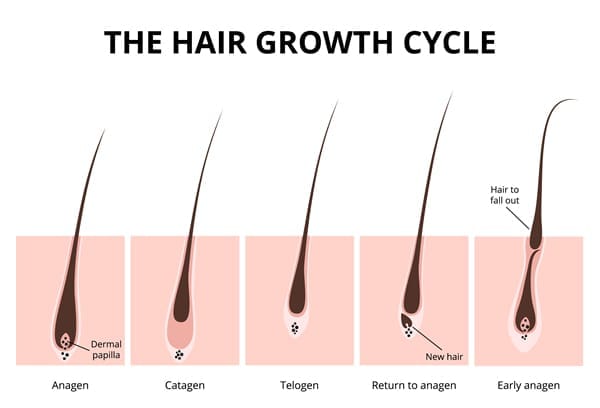
Normally, about 85–90 % of hairs are in anagen; about 10 % are in telogen.
What changes in pregnancy/postpartum:
During pregnancy, more hairs stay in the anagen phase and fewer go into telogen, so less shedding occurs.
After delivery, many of those previously “held back” hairs switch en masse into telogen (a synchronized shedding). That’s why shedding often peaks around 2–4 months postpartum.
The shedding may last several months as hair follicles gradually resume normal, staggered cycles.
This is often referred to as postpartum telogen effluvium (sometimes called “telogen gravidarum”).
What Makes Hair Loss Worse — Risks & Exacerbating Factors

Although postpartum shedding is common (as many as 90% of women have reported experiencing it!) , some factors seem to make it more severe or prolonged.
According to a questionnaire-based study preterm labor and longer-term breastfeeding were two independent risk factors for postpartum hair loss.
Other associated factors from smaller studies include prior history of hair loss, high stress, gestational diabetes or nutrient deficiencies (e.g. iron deficiency).
It is also evident that postpartum telogen effluvium can unmask underlying hair loss conditions such as female pattern hair loss (androgenetic alopecia) or traction alopecia.
As a result in some women, the shedding can last much longer than often expected, and may represent more than “just” postpartum shedding. If the amount of hair loss seems excessive, loss is patchy or prolonged it may warrant further evaluation and potential investigations by a medical provider.

What Are the Typical Symptoms & Timeline?
When Does It Start?
Most reports agree the shedding begins 2–4 months after delivery.

What Does It Look & Feel Like?
You may notice:
· More hair in your brush, on your pillow, or accumulating in the shower drain
· A general thinning or reduction in volume (especially in the frontal or mid scalp region)
· Hair feels finer, flat, or less lustrous
· Sometimes increased hair breakage
· In some cases, slight recession along the frontal hairline
· The hair loss is usually diffuse (across many parts of the scalp) rather than patchy

How Long Does It Last?
Most women see the worst shedding over a 3–6 month period, with gradual recovery over the ensuing months.
A common question is how long does postpartum hair loss last, and the answer is that most women see improvement by their child's first birthday or within approximately 15 months.
In one historical study of 98 women with postpartum alopecia, about two-thirds returned to “normal” hair volume within 4–6 months; with only rare cases that did not recover fully due to some other abnormality. After the shedding period, hair typically resumes its normal growth cycle.
What You Can (and Can’t) Do: Management & Tips

One thing that many dermatologists emphasise first: reassurance.
In most cases, postpartum hair loss is a temporary, natural process.
Still, there are things you can try to support healthier hair regrowth, reduce excess shedding, and improve appearance in the meantime. Using hair care products that add volume whilst avoiding further damage can help enhance the fullness and body of your hair during this period.
Gentle Hair & Scalp Care
Use mild, volumizing and conditioning shampoos to help keep hair moisturized and reduce breakage
— avoid extremely heavy conditioners that can weigh hair down.
Apply conditioner mainly to the mid-lengths and ends, not at the scalp.
Avoid overly tight hairstyles, braids, or ponytails – these can cause traction and worsen hair loss due to excessive stress on the hair follicles. Instead, opt for loose styles.
Minimise use of harsh heat (blow-dryers, straighteners, curling irons) which weakens hair and increases risk of further hair loss.
Try gentle scalp massage to improve local circulation.
Use a wide-tooth comb when detangling wet hair.

Nutrition & Supplements
Because new mothers (especially breastfeeding ones) have high nutritional demands, deficiencies can aggravate hair loss.
Some supportive steps:
Ensure adequate protein, iron, zinc, biotin, B-vitamins and vitamin D.
If lab tests with your medical provider show iron deficiency or low ferritin, address those under medical supervision!
Continue an age-appropriate prenatal/postnatal multivitamin (stopping those abruptly can trigger off sudden hair loss).

Note: There’s no high-level evidence that any particular supplement “cures” postpartum hair loss; they may help if underlying deficiency is present.

Avoid Panic Treatments / Unproven Therapies
Every now and again I will get a question about new hair loss treatments.
Some therapies have been suggested, but scientific backing is weak:
Topical estradiol or progesterone lotions — studied but evidence lacking robust support.
Orally administered treatments to accelerate regrowth — usually avoided during breastfeeding period.
If you’re considering any unusual therapy (especially while breastfeeding), always consult a dermatologist or your obstetrician if dealing with hair loss during pregnancy.
Patience & Psychological Support
Be gentle with yourself — emotional stress certainly worsens hair shedding. Indeed, postpartum hair loss has been associated with anxiety and decreased self-esteem in many women.
Sometimes a shorter, layered haircut can make hair appear fuller in the meantime.
When to Seek Medical Help

While postpartum hair loss is usually harmless, the signs below warrant evaluation by a dermatologist:
· Shedding persists beyond 12 to 15 months
· Hair loss is patchy (rather than diffuse)
· Hair thinning seems progressive or worsening rather than stabilising
· You notice other symptoms: fatigue, weight change, skin/hair/nail changes (which may suggest thyroid or autoimmune disease)
· Lab tests reveal iron deficiency, thyroid dysfunction, or hormonal abnormalities needing treatment
· You have a personal or family history of hair loss that might suggest an underlying condition
A dermatologist can perform scalp examination, hair pull tests, dermoscopy, and order labs or scalp biopsies as needed.

Frequently Asked Questions (FAQs): What You Need to Know About Hair Loss Postpartum

Is it normal?
Yes — most women experience postpartum shedding due to hormonal shifts.
When does it begin?
Usually 2–4 months after delivery.
How long does it last?
Often 3–6 months, sometimes up to 12 months or more.
Can I stop it totally?
You can support healthier regrowth, but you can’t completely prevent the natural cycle.
When is it a problem?
If shedding continues >12–15 months, or if hair loss is patchy or worsening.
Does hair loss in pregnancy ever happen (i.e. before birth)?
It’s rare. Most hair changes happen postpartum. If you are experiencing significant hair shedding during pregnancy, it’s worth checking for nutritional deficiencies, thyroid issues or stressors.
Will my hair come back fully?
In most cases, yes — full or near-full recovery happens by 12 months postpartum or earlier in many women.
Can breastfeeding make it worse?
Some studies suggest longer duration of breastfeeding correlates with more intense or prolonged shedding. However, breastfeeding is not contraindicated and its benefits are significant.
What role do iron and ferritin play?
Low ferritin or iron deficiency can aggravate hair loss. If lab results show these are low, treating them under medical guidance may help.
Are there safe treatments while breastfeeding?
Topical minoxidil is sometimes used (depending on formulation), but therapies like oral medications, strong hormonal treatments or supplements should be considered carefully. Always discuss with your medical provider first.
When should I see a dermatologist?
If shedding continues beyond 12 to 15 months, if the pattern is patchy, or if you have other worrisome symptoms.
